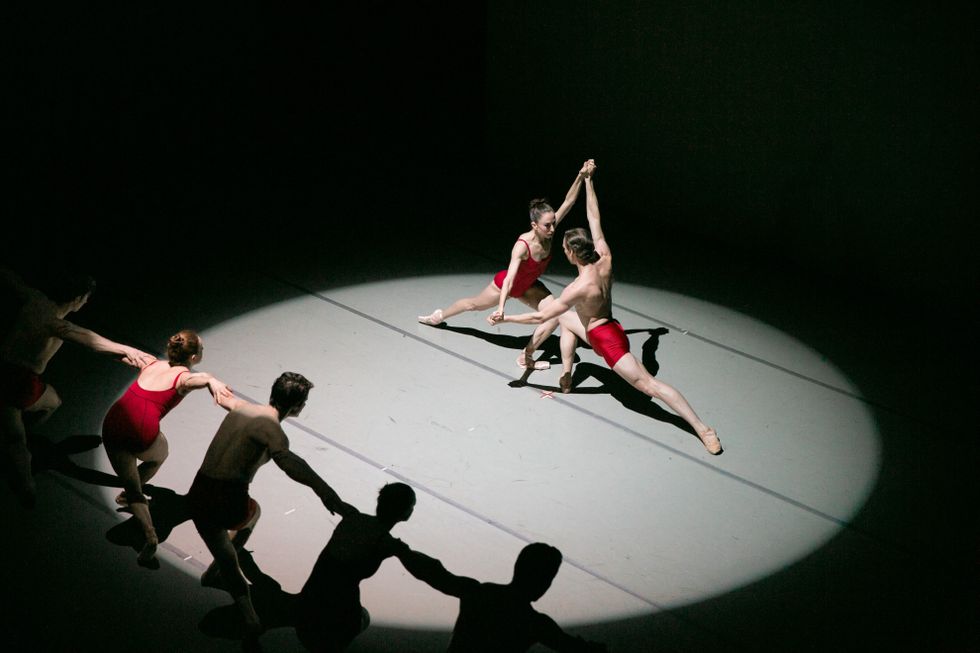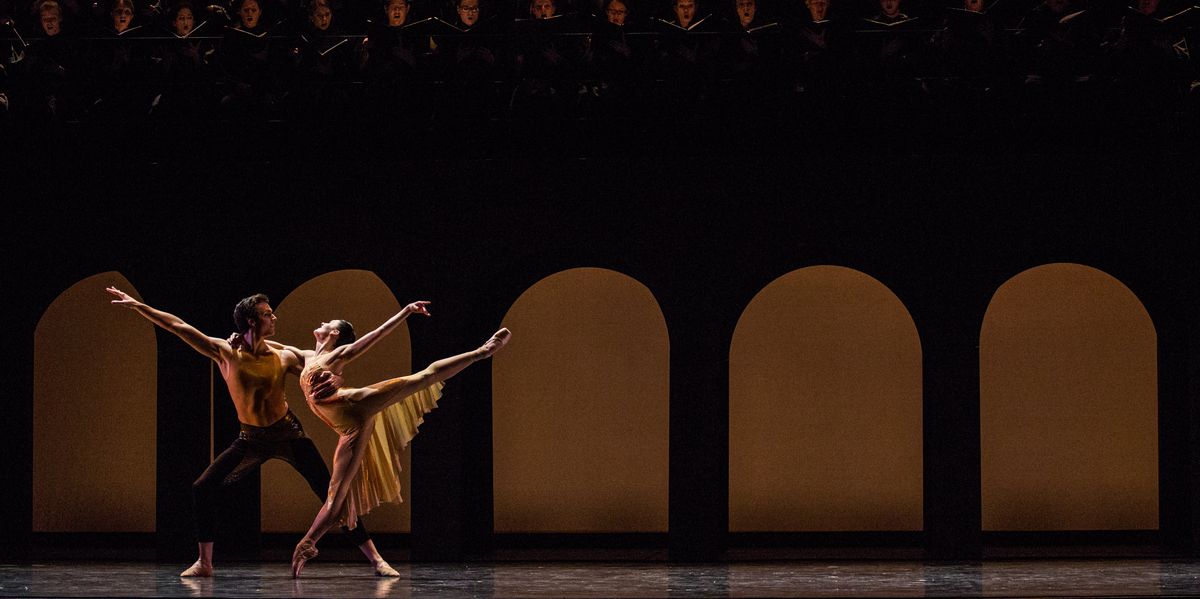How Do Choreographers Bring Something Fresh to Music We've Heard Over and Over?
In 2007, Oregon Ballet Theatre asked Nicolo Fonte to choreograph a ballet to Maurice Ravel’s Boléro. “I said, ‘No way. I’m not going near it,’ ” recalls Fonte. “I don’t want to compete with the Béjart version, ice skaters or the movie 10. No, no, no!”
But Fonte’s husband encouraged him to “just listen and get a visceral reaction.” He did. And Bolero turned into one of Fonte’s most requested and successful ballets.
Not all dance renditions of similar warhorse scores have worked out so well. Yet the irresistible siren song of pieces like Stravinsky’s The Firebird and The Rite of Spring, as well as the perennial Carmina Burana by Carl Orff, seem too magnetic for choreographers to ignore.
And there are reasons for their popularity. Some were commissioned specifically for dance: Rite and Firebird for Diaghilev’s Ballets Russes; Boléro for dance diva Ida Rubinstein’s post–Ballets Russes troupe. Hypnotic rhythms (Arvo Pärt’s Spiegel im Spiegel) and danceable melodies (Bizet’s Carmen) make a case for physical eye candy. Audience familiarity can also help box office receipts. Still, many choreographers have been sabotaged by the formidable nature and Muzak-y overuse of these iconic compositions.

Carolina Ballet in Christopher Stowell’s Rite of Spring
Armes Photography, Courtesy Carolina Ballet
Take a juggernaut like The Rite of Spring. Stravinsky’s early work has a rhythmic vitality that “excites the dancer in any choreographer when listening to it,” says Eugene Ballet artistic director Toni Pimble, who choreographed a version in 2002. Many choreographers have wrestled with Rite‘s jagged patterns, including Nijinsky for the 1913 Paris premiere.
“The relentless, driving rhythms toward the end are a potential choreographic trap,” says Pimble. “The biggest challenge is to not peak too soon.”
Christopher Stowell created his Rite for OBT in 2009. “The original choreography seems dated, but the music has never become dated,” he says. “No one has said there’s a definitive version.” Now associate artistic director for the National Ballet of Canada, Stowell knew the Nijinsky, Pina Bausch, Paul Taylor and Glen Tetley versions were all very different. “I didn’t emulate them. I tried not to be intimidated by them,” he says.
His intimate chamber version (like Taylor’s) uses the two-piano reduction of the composition, sparing the choreography from competing with the epic orchestration. This allowed him to eschew the original libretto and focus on the theme of “a society that welcomes and rejects.”
Similarly, when creating Carmen as a one-act story ballet, Stowell steered clear of any resemblance to Roland Petit’s ballet, which, he says, “didn’t resonate with me anymore.” The only thing he retained was “the spirit of danger” the ballet evinced. Instead, he let Bizet’s music speak: “The tunes are all magical and brilliant for dancing.”
No matter whether or not there’s one definitive ballet set to a particular score, choreographers, of course, work to bring something new to the music. In 2009, Boston Ballet artistic director Mikko Nissinen commissioned Helen Pickett to choreograph a duet to Pärt’s Spiegel im Spiegel. Pärt’s music was then known primarily from Christopher Wheeldon’s 2005 After the Rain Pas de Deux, before numerous competition choreographers and MFA students churning out their theses got ahold of it.
Pickett describes Pärt’s compelling music as “morning dew falling from a blade of grass the moment just before it drops. It hangs in a state of anticipation.” The slow waltz rhythm, she says, is hypnotic, because “the repetition is like a caress that invites us to breathe, to savor.”
Aware of the impact of After the Rain, Pickett decided to go in a markedly different direction: While After the Rain‘s unhurried fluidity evokes a dissolution, a melting away, Tsukiyo‘s movement, performed on pointe, emphasizes a passionate desperation.
She didn’t let audience and critical comparisons stymie her. “Hopefully people have opinions and comments,” says Pickett. “It means they’re thinking about the work. I’ve gotten past the ‘like’ or ‘dislike’ because, at this point in life, I do the same thing. What is more important is that the conversation is happening, especially for this iconic stuff. It’s alive.”

Boston Ballet in Helen Pickett’s Tsukiyo
Liza Voll, Courtesy Boston Ballet
Yet choreographers can’t ignore the hurdle of viewer expectations. As Pickett points out, “music and memory are so linked.” Consider Carmina Burana, timeworn through beer, pizza and sneaker commercials and Jackass: The Movie. When Fonte created his 2017 joint production for Ballet West and Cincinnati Ballet, he didn’t want to repeat what John Butler had done with his themes of sinners, saints and redemption.
“I wanted to make it more joyful with more bravura dancing,” he says. Although audiences embraced his energetic reimagination, one critic missed the Butler narrative as “an organizing choreographic principle.”
“In exploring things you have to be ready for people with preconceived expectations, and that you might not be able to meet those,” says Stowell. When he choreographed Carmen, he envisioned a militaristic, postapocalyptic world with Carmen as a “creature who is rising from the ashes,” he says. “It’s about power and vulnerability and security versus fate.”
But he ran into some resistance with his unconventional version. An influential donor to the ballet, for one, was disappointed there was no spitfire in a red dress.
Sometimes, though, serendipity blesses a choreographer. When Yuri Possokhov set out to choreograph Firebird in 2004, he braced himself and learned the score by heart. Although that flaming bird has nearly incinerated many fine choreographers, he discovered that with Stravinsky, “our souls overlap,” he says in a YouTube promotion for Atlanta Ballet’s production. “And I thought it was going to be so hard, but it was one of the easiest jobs I ever did.”
Using Stravinsky’s shorter revision of the score, Possokhov’s deep connection to the music helped to transform the familiar piece into a concise allegorical story of a prince who chooses between enchantment (the Firebird) and pragmatism (the Princess).
When the imagination is fired up, the creative kindling is primed for igniting new interpretations. Can we hear these warhorse scores in new ways? If they speak to young choreographers, why shouldn’t they try them? “I don’t think it should thwart any creative person,” says Pickett. “It’s like squashing a 5-year-old who’s discovered mud pies. Don’t squash the person’s creative ideas.” Choreographers need to be allowed to experiment and fail until they find their voice, a process that she says allowed one of her mentors, William Forsythe, to prevail.
Scores like these will inevitably defeat some choreographers in their quest to conquer them. Others may succeed. “But directors keep commissioning these scores, in part, because they know that people like the known,” says Pickett. “We all do.”
The challenge, it seems, is to find the unknown within the known.




